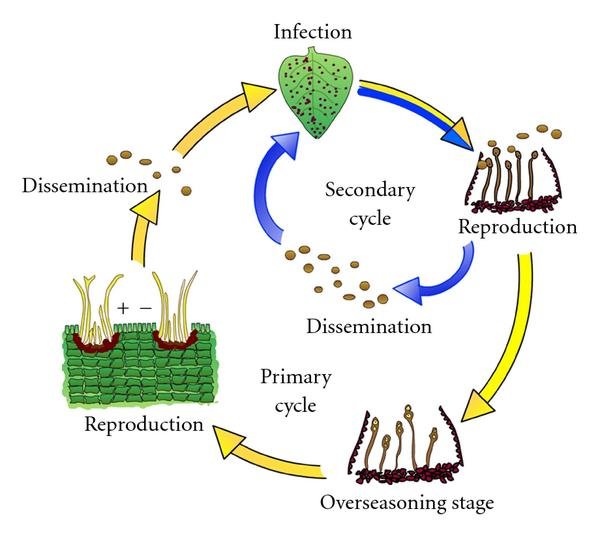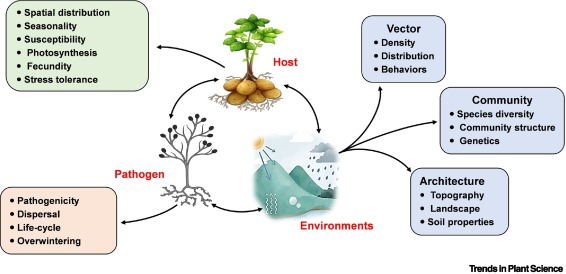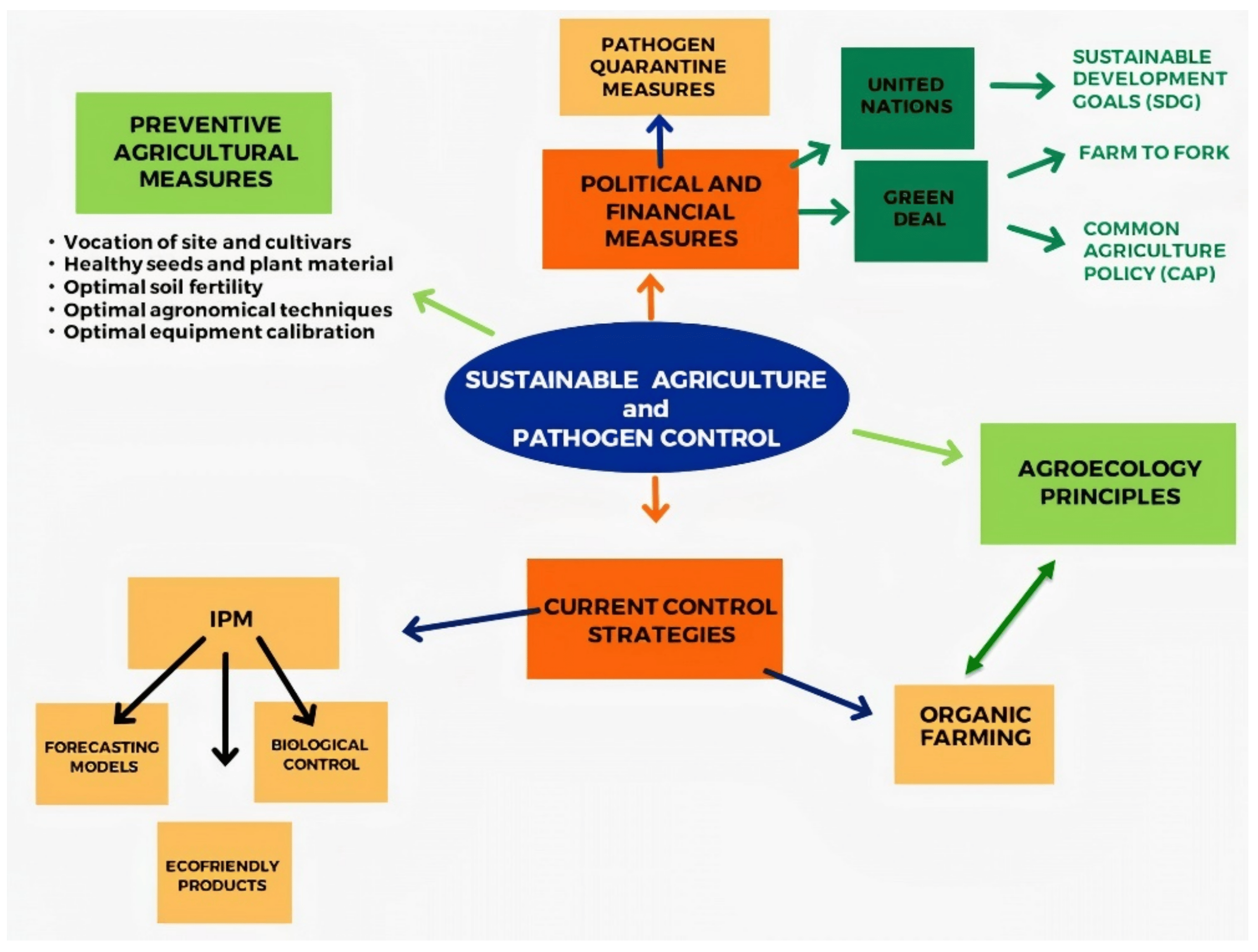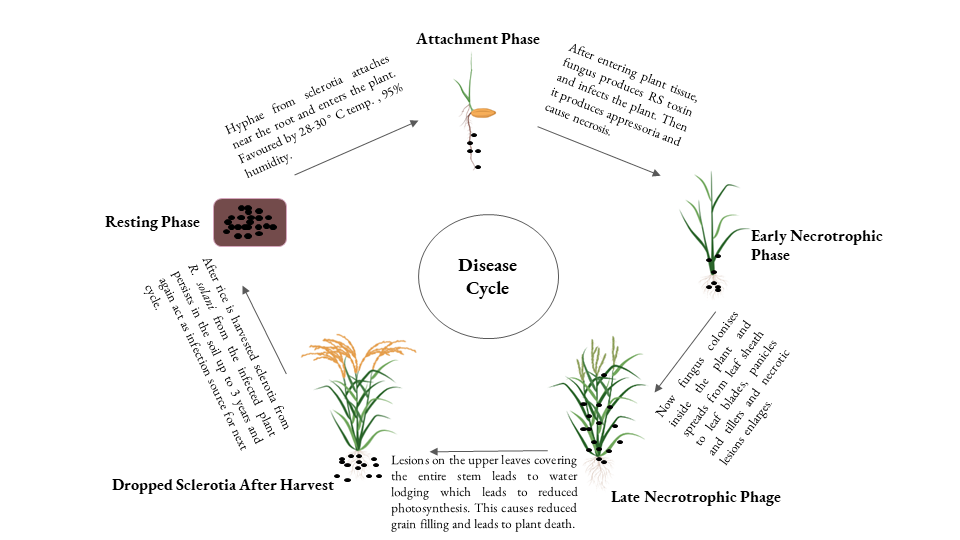In the entangled world of plants and pathogens, the plant disease cycle manifests as a captivating interplay of events, where pathogens exploit their host’s vulnerabilities to thrive and propagate.
This intricate dance encompasses several distinct stages, including Inoculation, Penetration, Host Recognition, Establishment of Infection, Colonization or Invasion, Growth and Reproduction of Pathogen, Dissemination, and Overseasoning. Each stage involves complex interactions between the pathogen and its host, influenced by a myriad of environmental factors. In this article, we delve into the intricacies of the plant disease cycle, examining the molecular mechanisms, ecological implications, and the importance of deciphering this process to develop effective disease management strategies and safeguard global agricultural systems.
Introduction:

The plant disease cycle represents a dynamic and ever-changing sequence of events that govern the relationship between pathogens and their hosts. Pathogens, including bacteria, fungi, viruses, and nematodes, relentlessly seek entry into host plants, initiating a cascade of events that lead to disease development. Understanding the intricacies of this cycle is essential for mitigating plant diseases and ensuring sustainable agricultural productivity.
The Stages of the Plant Disease Cycle:
a) Inoculation:
The cycle commences with the process of Inoculation, where pathogens encounter their host plants. This can occur through various means, such as wind, water, soil, vectors, or direct contact. Upon reaching a susceptible host, the pathogen aims to overcome physical barriers and evade the plant’s defense mechanisms.
b) Penetration:
Once the pathogen is in close proximity to the host, it must breach the plant’s external defenses. This stage, known as Penetration, involves the pathogen employing an array of specialized structures and enzymes to breach the plant’s cell wall, cuticle, or stomata. The successful penetration provides the pathogen with access to the host’s interior tissues.
c) Host Recognition:
Host Recognition is a crucial stage in the disease cycle, where the pathogen navigates the molecular landscape of the host plant to identify the appropriate tissues for colonization. Pathogens use specific surface receptors and signaling mechanisms to detect and respond to host cues, ensuring they target suitable hosts for infection.
d) Establishment of Infection:
Following successful host recognition, the pathogen establishes an intimate relationship with the host plant during the Establishment of Infection. This phase involves the pathogen deploying a range of virulence factors, including toxins and effectors, to manipulate the host’s cellular processes and suppress its defense responses. Simultaneously, the host attempts to defend itself through physical barriers and activation of defense-related genes.
e) Colonization or Invasion:
Once inside the host tissues, the pathogen undergoes Colonization or Invasion, rapidly multiplying and spreading through the plant’s vascular system. This widespread colonization often results in the manifestation of visible disease symptoms, such as wilting, leaf spots, or necrosis.
f) Growth and Reproduction of Pathogen:
During the growth and reproduction stage, the pathogen exploits the host’s nutrients and energy reserves to fuel its proliferation. This results in an exponential increase in the pathogen population, further exacerbating the disease symptoms and increasing the likelihood of dissemination.
g) Dissemination:
In the dissemination stage, the pathogen generates new inoculum, which can be disseminated through various means, such as wind, water, insects, or other vectors. Dissemination is critical for the pathogen’s survival and spreading to new hosts, thus perpetuating the disease cycle.
h) Overseasoning:
As seasons change and environmental conditions become unfavorable for pathogen survival, the pathogen may resort to overseasoning, forming survival structures like spores or sclerotia that persist in the environment until conditions become favorable once again.
Factors Influencing the Plant Disease Cycle:

The plant disease cycle is intricately influenced by various factors:
a) Environmental Conditions:
Temperature, humidity, rainfall, and other environmental factors play a pivotal role in shaping the disease cycle. Favorable conditions for the pathogen’s growth and dispersal can lead to severe disease outbreaks.
b) Host Resistance:
The genetic makeup of the host plant determines its susceptibility or resistance to specific pathogens. Plant breeders often develop resistant cultivars to limit disease spread.
c) Pathogen Virulence:
Pathogens possess diverse virulence factors that enable them to exploit host plants effectively. Understanding these factors can aid in the development of targeted disease management strategies.
d) Vector Behavior:
Some pathogens rely on vectors, such as insects or nematodes, for transmission between plants. Vector abundance and behavior influence the spread of disease.
4. Ecological Implications and Impact on Agriculture:
a) Crop Yield Reduction: The most apparent impact of the plant disease cycle on agriculture is the reduction in crop yields. Crop plants are vulnerable to a wide range of pathogens, and unchecked disease outbreaks can lead to significant losses in production, negatively affecting farmers’ livelihoods and food availability.
b) Economic Losses: Plant diseases can result in substantial economic losses for farmers, agricultural industries, and even entire regions. The costs associated with disease management, crop losses, and reduced marketable produce place financial burdens on stakeholders.
c) Increased Production Costs: Implementing disease control measures can drive up production costs for farmers. From investing in disease-resistant crop varieties to employing pesticides or biocontrol agents, these additional expenses can strain farmers’ profitability.
d) Loss of Genetic Diversity: The reliance on a limited number of genetically uniform crop varieties, which are susceptible to certain diseases, can lead to a loss of genetic diversity within agricultural systems. This reduced genetic diversity increases the risk of catastrophic crop failure if a new pathogen emerges.
e) Food Security Concerns: Disease outbreaks affecting staple food crops can significantly impact food security, especially in vulnerable regions. Reduced yields and compromised crop quality can exacerbate hunger and malnutrition in communities that heavily rely on these crops for sustenance.
Deciphering the Plant Disease Cycle for Effective Management:
Understanding the complexities of the plant disease cycle is crucial for developing effective disease management strategies. Integrated pest management (IPM) approaches, incorporating cultural practices, biological control, host resistance, chemical treatments, and early detection systems, can help mitigate the impact of plant diseases.
Mitigation Strategies:

Addressing the ecological implications and mitigating the impact of the plant disease cycle on agriculture necessitates comprehensive and sustainable strategies:
a) Resilient Crop Varieties: Developing and cultivating disease-resistant crop varieties is vital in minimizing the impact of plant diseases on agricultural systems. Breeding programs can focus on incorporating genetic resistance to common pathogens.
b) Integrated Pest Management (IPM): Adopting IPM approaches can help balance disease control with ecological considerations. IPM strategies use a combination of cultural practices, biological control, and targeted chemical treatments to manage disease while minimizing harm to the environment.
c) Surveillance and Early Detection: Implementing surveillance systems for the early detection of disease outbreaks can help prevent or limit their spread. Rapid response measures can be deployed to contain and manage infections effectively.
d) Diversification: Encouraging crop diversification can reduce the risk of widespread crop losses due to a single disease. Planting a variety of crops can also support biodiversity and contribute to ecosystem resilience.
e) Education and Outreach: Educating farmers and stakeholders about best practices in disease management and sustainable agricultural techniques is essential for building resilience and adaptive capacity within agricultural communities.
The plant disease cycle represents an awe-inspiring biological phenomenon, where pathogens and plants engage in a perpetual struggle for survival. This dynamic interplay influences agricultural productivity, ecosystem stability, and global food security. By unraveling the mysteries of the plant disease cycle through advanced research and multidisciplinary collaboration, we can equip ourselves with the knowledge and tools to mitigate the devastating effects of plant diseases and ensure a resilient and sustainable future for agriculture and biodiversity.
References :
- De Wolf, E. D., & Isard, S. A. (2007). Disease Cycle Approach to plant Disease Prediction. Annual Review of Phytopathology, 45(1), 203–220. https://doi.org/10.1146/annurev.phyto.44.070505.143329
- Plant disease: Pathogens and cycles. (2019, January 28). CropWatch. https://cropwatch.unl.edu/soybean-management/plant-disease
- Plant disease | Importance, Types, Transmission, & Control. (1999, May 4). Encyclopedia Britannica. https://www.britannica.com/science/plant-disease/Epiphytotics
- Nazarov, P. A., Балеев, Д. Н., Ivanova, M., Соколова, Л. М., & Karakozova, M. (2020). Infectious plant diseases: etiology, current status, problems and prospects in plant protection. Acta Naturae, 12(3), 46–59. https://doi.org/10.32607/actanaturae.11026
Image Courtesies:
Featured Image : https://bitly.ws/3hSBC
Content Image 1 : http://bitly.ws/LKA2
Content Image 2 : https://bitly.ws/3hSBY
Content Image 3 : https://bitly.ws/3hSCt

